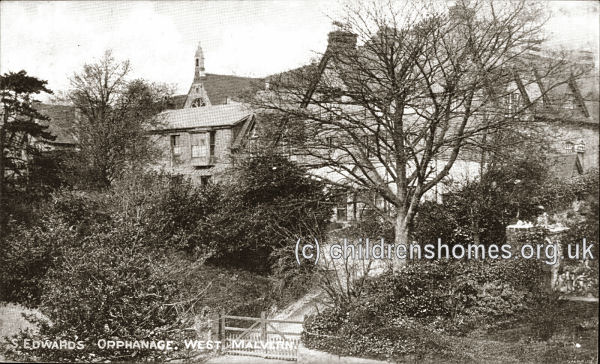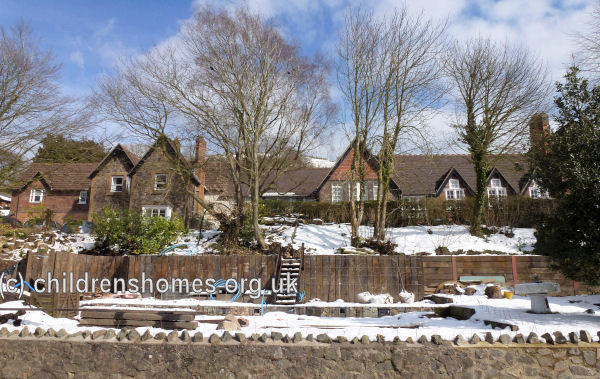St Edward's Orphanage, West Malvern, Worcestershire
St Edward's Orphanage was founded in 1876 by the Rev. F.A.G. Eichbaum for the reception and education of orphan boys from the lower classes. Its first premises were a rented house in Malvern Link, then moving in 1879 to larger premises at Colwall, where around 70 boys could be housed. The Rev. Eichbaum himself took on the role of the establishment's warden.
By 1881, sufficient funds had been raised for construction of a permanent building which was located in West Malvern Road, West Malvern, in grounds adjacent to the Clergy House of Rest which had been opened in 1874. The foundation stone of the new building was laid on 22 July 1881 by Lady Alwyne Compton. A contemporary report of the occasion is reproduced below:
The architect of the new building was Mr F.W. Hunt, of London, and was constructed in plain stone hung with coloured tiles. Its appearance was intended to harmonise with the adjacent House of Rest's chapel, erected in 1880, which would also be used by the orphanage.
The School site is shown on the 1905 map below.

St Edward's Orphanage site, West Malvern, c.1905.

St Edward's Orphanage from the south-west, West Malvern, c.1910. © Peter Higginbotham
On 16 March 1912, the home was certified to operate as a Certified School, allowing it to receive boys boarded out by the workhouse authorities. For this purpose, it could accommodate up to 50 boys , aged 7-10 at their date of admission. A weekly charge of 10s.6d. was made for the maintenance of each boy.

Former St Edward's Orphanage, West Malvern, 2014. © Peter Higginbotham

Former St Edward's Orphanage, West Malvern, 2014. © Peter Higginbotham
The Rev. Thomas Clare Ward was invloved with the home for almost fifty years, originally as sub-warden in the early 1900s and later as warden. When the running of the home was taken over by the Community of the Holy Name, he became its chaplain.
In 1969, the home became a residential nursery for the children of students from Commonwealth countries, under the charge of Sister Francesca Mary.
The premises are now used as a conference centre known as St Edward's House.
Records
Note: many repositories impose a closure period of up to 100 years for records identifying individuals. Before travelling a long distance, always check that the records you want to consult will be available.
- Certified Schools were run by a wide range of groups and individuals and have no central records. However, relevant information may survive in the records of the Poor Law Union that placed each child at a particular establishment. The best place to start is the union covering the area where the child previously resided, although children were sometimes sent further afield.
Bibliography
- Certified Schools page on this website.
Links
Except where indicated, this page () © Peter Higginbotham. Contents may not be reproduced without permission.


